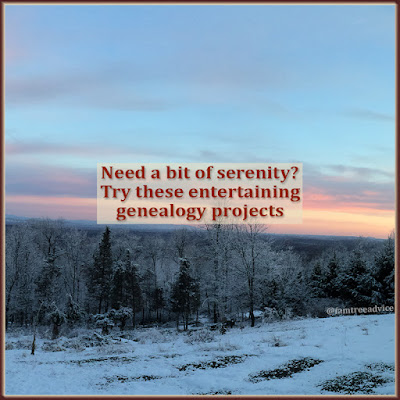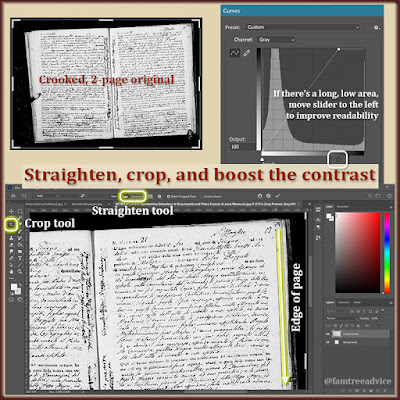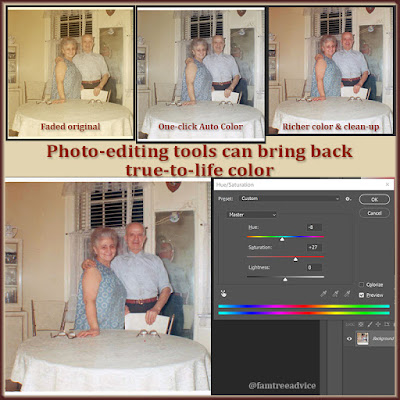On Sunday, after finishing a bunch of chores, I was eager to launch Family Tree Maker. I wanted to do one thing. It's something I've been preparing for the last few weeks.
My Own Vital Records Database
You see, in 2017 I downloaded all the available vital records from my ancestral hometowns. These jpg files sit on my computer, organized in folders by year and type of record (birth, marriage, death). Whenever I wanted to search for an ancestor, I could go year-by-year and look at the indexes until I found them.
But there's a much better way. I've been renaming every document image file to include the name of the main person(s) in the vital record. The original image file name of 2 facing 1809 birth records was 007853875_00497.jpg. Now it's 2 Carmine Pasquale Zeolla di Antonio & 3 Anna Maria Martuccio di Giovanni.jpg. The image includes the birth records for:
- Carmine Pasquale Zeolla, son of Antonio
- Anna Maria Martuccio, daughter of Giovanni
In the future, if I need to find either Carmine or Anna Maria, I can locate these documents in a snap.
There are thousands of files in my collection. I want to squeeze every single relative from them. And that'll be way easier if I can search for their names on my computer.
 |
| A perfect combination of software makes my public genealogy database possible. |
Breaking Through to Another Generation
With that in mind, I've been renaming the vital record files from my great grandmother's hometown. I'd already gone quite far in building her family tree. But I knew there were more ancestors hiding in those files.
Sunday night I hoped to add a generation to her family tree. One by one, I looked at her direct ancestors in Family Tree Maker to see who was missing a death record. Only two of my 5th great grandparents were still dead ends.
I use a Windows program called Everything to search my computer for an ancestor's name. It organizes the results by folder names, so it's easy to see which results are death, birth, or marriage records—and which year they're from.
I found the death records for my two dead-end 5th great grandparents easily. That means I discovered the names of four of my 6th great grandparents. All within a few minutes!
The database I'm creating by renaming the image files is invaluable. I'd love to share it with other descendants of my towns. If they find their ancestor in a list of all my file names, they can pull the original file from the Antenati website.
 |
| My database is the best thing ever to happen to my family tree. Now I have a way to share it. |
Sharing My Hard Work
To make this database sharable, I need to capture all the file names in hundreds of folders and sub-folders. After researching, I found a reputable Windows program that can do the job. It's called Karen's Directory Printer, and it comes highly recommended.
I put it to work on my grandfather's town of Colle Sannita. I set it up to create a list of each file name and the folder it comes from. Within a couple of minutes the program generated a nearly 40,000-line text file of file names. This is the first time I've had any sense of how many vital records I have for this town!
There are many marriage documents I skipped in the file renaming process. At first I renamed only the marriage documents themselves. That made the couple's names searchable. But the folders also contain marriage banns, birth, and death records for the two families. Usually I rename those extra documents when I'm working on a particular couple.
But lately I've been renaming all the files in a marriage folders. I have a long way to go, but the very old death records are wildly helpful. I've been using them to bring some branches of my family tree back to the 1600s.
What I did for now is create a text file for each of my towns containing the file name every vital record on my computer. I'll regenerate the text files after I rename lots more image files. Finally, I can share this bounty with everyone who has a stake in any of my ancestral hometowns.
I've seen lots of people upset that these Italian documents online aren't searchable. It takes hundreds of man-hours to turn an image collection into searchable text. As long as I'm spending those man-hours, I may as well share the results.
This project will keep me busy for a long time. If you're thinking about doing something similar, there are many benefits:
- If you view and rename batches of files from a town, you will get familiar with the names. This helps you overcome bad handwriting.
- Individual searches for your ancestors become very easy.
- You may find that the whole town's related through marriage.
I'll add links to my database in the Free Genealogy Resources section of this blog. I'll upload the files to my www.forthecousins.com website. And I'll mention them in Facebook groups devoted to individual towns. Maybe I can interest the Antenati site, too.
Don't keep a big important genealogy project to yourself! You've got tons of DNA relatives out there who need your work.
And speaking of document image files:





